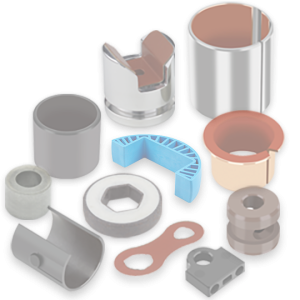How to calculate specific load.
To determine the bearings capability of resisting permanent deformation under worst case scenarios we must first determine the maximum applied force, Fmax,. To determine the maximum force, which is critical to a robust bearing design, we must consider: anticipated design loads; load history based on other similar designs; measured loads; power source information like torque versus speed; shock loads. Maximum specific load, p max, is used to determine if the bearing material has sufficient load capacity to support the maximum load.
When determining bearing life for select GGB products, an average or weighted average bearing load, F, is used to determine if the bearing material will provide sufficient life when considering the sliding speed. The average bearing load is calculated when load data is limited to minimum and maximum values. If the load range is relatively small (less than 25%) between the min/max loads, then simply take the average of the two values. If the load range is relatively large then take 2/3 of the difference and add it to the minimum load for a “conservative” average. If a load versus time history is available, assuming a steady speed, then a weighted average is possible:
where tn and Fn are the times and loads respectively for each time/load increment and St.
When the speed varies, substitute the number of revolutions, n1, n2 ... nn and Sn for the time increments t1, t2 ... tn and St.
Now that the maximum and average forces have been determined, the specific load is very easy to calculate:
- For sleeve bearings the projected area, A = Di ´ B, based on the sleeve bearing inside diameter, Di, multiplied by bearing length, B:
- For thrust washers, A = 0.25 ´ p ´ (Do2 – Di2), where Do and Di are the washers outside and inside diameters respectively.
- For flanged bearings thrust surfaces, A = 0.04 ´ p ´ (Do2 – Di2), where Do is the flange outside diameter and Di is the flanged bearing inside diameter.
- For linear slideways, A = L ´ W, where L = bearing material length; W = bearing material width.





